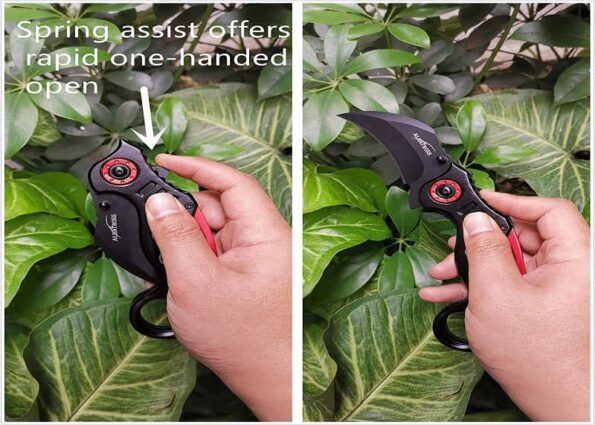Damascus Steel Vs Carbon Steel, Many things need to be examined when purchasing a new knife. This includes the size and shape of the knife, the materials used to produce the scales of the handle, and the manner the knife is attached. One component that should never be disregarded is the blade material. This might influence the strength and durability of the knife.
There are several materials that may be utilized, and the two most frequent for high-end knives are Damascus Steel Vs Carbon Steel. In this article, we analyze the key distinctions between Damascus Steel Vs Carbon Steel.
Editor’s Recommendations
- Best Pocket Knife for Self-Defense
- Best All-Around Hunting Knife
- Best Hunting Knife Reviews
- Best Pocket Knife Under 100
- Best Wood Carving Knife Reviews
- What is the Best Steel for a Knife
- Best Damascus Pocket Knife
- Best Bushcraft Knife under 100
- Best Carbon Steel Pocket Knife
- Damascus Steel Pocket Knife
- Best Damascus Chef Knife
17 Damascus Steel VS Carbon Steel From 2023
Here is the list of the top 17 Damascus Steel Vs Carbon Steel:
Editor’s Note: We will update this list as more Damascus Steel Vs Carbon Steel hit the market.
Damascus Steel VS Carbon Steel: How They Are Different?
Damascus Steel Knife
Damascus steel has a long and rich history. It is an iron shrouded by myth and its distinctive look further adds to its mythology. Damascus steel gets its name from the Syrian city, Damascus.
The genuine name of steel is really wootz steel; nevertheless, it was via the city of Damascus that the wootz blades were swapped to the west and hence it became known as Damascus steel.
No.1 Best Quality Custom Handmade Full Tang Classic Bowie Knife Of 2022
This Damascus Steel bowie Knife has a razor-sharp blade, particularly stringent to catch a variety of stressful tasks.
- Blade length: 10”
- Handle length: 6”
- Overall length: 16”
- Thickness: 4mm
- Pattern: Raindrop
- Layers: 67 Layers
- Hardness: 58-60 HRC
- Handle material: Black Horn
- Blade material: Damascus Steel
- Sheath Type: Pure Leather
No.2 Beautiful Handmade Best Kukri Knife | Best Damascus kukri Knife Of 2022
This Damascus Steel Kukri Knife has a razor-sharp blade, particularly stringent to catch a variety of stressful tasks.
- Blade length: 12”
- Handle length: 6”
- Overall length: 18”
- Thickness: 4mm
- Pattern: Twist
- Layers: 67 Layers
- Hardness: 58-60 HRC
- Handle material: Brass Guard, Bone
- Blade material: Damascus Steel
- Sheath Type: Pure Leather
No.3 Best Quality Handmade Professional Chef Knives Set Of 2 Pcs For Kitchen
This Damascus Steel professional chef knife set has a razor-sharp blade, particularly stringent to catch a variety of stressful tasks.
- Blade length: 6 to 7”
- Handle length: 5”
- Overall length: 11 to 12”
- Thickness: 4mm
- Pattern: Twist
- Layers: 67 Layers
- Hardness: 58-60 HRC
- Handle material: Damascus
- Blade material: Damascus Steel
- Sheath Type: Pure Leather
No.4 Hand made Damascus Steel Chef Knife Set With Black Micarta Handle
The list of works on the product is presented below:
- Blade length: 2.5 to 8”
- Handle length: 5”
- Overall length: 5 to 13”
- Thickness: 2mm
- Pattern: Twist
- Layers: 67 Layers
- Hardness: 58-60 HRC
- Handle material: Black Micarta
- Blade material: Damascus Steel
- Sheath Type: Pure Leather
Types of Damascus Steel
There are actually two types of Damascus steel that can be referred to:
- Historic Damascus steel
- Modern Damascus steel
Historic Damascus Steel:
Historic Damascus steel is no longer manufactured, and current Damascus is more of a method than a substance in itself. The ancient steel of Damascus was made in classical times. It seems to have been created in Sri Lanka and India, then marketed in the Damascus area of Syria. Damascus swords and knives were renowned to be exceedingly powerful and sharp, but the technologies utilized to create these blades have been forgotten through time.
Modern Damascus Steel:
Modern Damascus steel aims to mimic the strength, sharpness, and beauty of classic Damascus blades. Some procedures are utilized to do this, however, they generally involve folding multiple layers of steel and making them together. This generates tremendous strength and causes the blade to reveal a lovely swirl pattern.
Damascus blades are frequently comprised of layers of both hard and soft steel sheets. Hard steels enable the cutter to cut readily, whereas soft steels cushion stress and impact. Along with the folds of metal generated during forging, this makes the blade exceptionally robust.
Damascus antique blades were known to be exceedingly sharp, which is why they were utilized for swords. Modern Damascus knives have preserved this quality. They are exceptionally sharp and keep the edges longer than most other knives, so they remain sharp. The hardness and sharpness of Damascus knives make them highly durable.
Composition of Damascus Steel Knife:
To understand the composition of Damascus steel, it is vital to realize that Damascus steel is produced from iron and steel is an alloy. It includes forging multiple sorts of stainless steel and iron together, which finally gives it its swirling patterns that can be observed on the knife. Stainless steels utilized in the creation of this product includes
- VG2 steel (including carbon, chromium, copper, nickel, and molybdenum.
- VG10 steel (containing carbon, chromium, cobalt, molybdenum, manganese, phosphorus, and vanadium.
Thanks to these combinations, Damascus steel has lovely patterns that seem to be wavy. These designs are such that no two blades are similar; this is one of the reasons why they are sought after by knife producers, along with the fact that they provide qualities that other knives cannot give consumers. However, steel is not precisely the strongest steel available and, by consequence, it is not the ideal option for creating blades that need to survive hard circumstances.
Pros:
- Damascus blades are very strong and durable; they absorb shocks from impacts easily and preserve their quality for a really long time.
- Their edge is sharper than most other knives’ and they take a significantly longer time to become dull.
- Their appearance is unique, with no two blades sharing the same pattern. Of course, they are also quite beautiful.
- They have an alluring historic flare, which also makes them attractive collector’s goods.
Cons:
- Some manufacturers don’t reveal the sorts of metal used to construct these knives, so you’ll need to stay with a trustworthy source for the best quality.
- Higher cost than other knives.
- They are not stained and corrosion-resistant, so they need to be cleaned and dried soon after use.
- They are certain to make your other knives envy.
What is Carbon Steel?
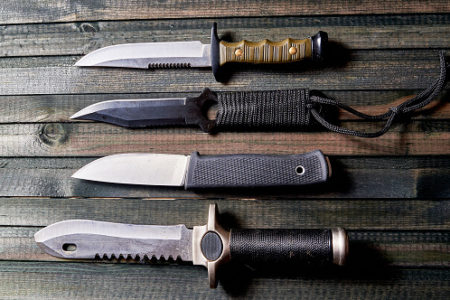
What is Carbon Steel
The technical definition of carbon steel implies that the end product includes nearly no other alloys, making the primary two components carbon and iron.
Carbon is what provides them great durability, therefore the more the amount, the stronger the blade. They persist for a very long amount of time, and some people feel that they are nearly indestructible. They also have great edge retention, since their hardness guarantees they don’t wear out as rapidly.
Carbon steel, or Damascus steel, is similarly strong and dependable, but the former is simpler to maintain. The meek appearance is great for individuals who do not like the typical Damascus blade design and want a more functional style.
No.1 NEW DESIGN CUSTOM HANDMADE DOUBLE BLADE AXES WITH BLADE ETCHING
The list of works on the product is presented below:
- Pattern: Carbon Steel
- Hardness: 58-60 HRC
- Handle Material: Wood
- Blade Material: Carbon Steel
- Sheath Type: Pure Leather
No.2 All-Purpose Carbon Steel Axe For Camping, Survival, Outdoors, Wood Cutting and Splitting
This Carbon Steel Axe has a razor-sharp blade, particularly stringent to catch a variety of stressful tasks.
- Overall length: 5
- Pattern: Carbon Steel
- Hardness: 58-60 HRC
- Handle material: Color Wood
- Blade material: Carbon Steel
- Sheath Type: Pure Leather
No.3 Best Quality Carbon Steel Chopper Knife For Chef With Wood, Handmade File Work Handle
This Carbon Steel chopper Knife has a razor-sharp blade, particularly stringent to catch a variety of stressful tasks.
- Blade Length: 7.0”
- Handle Length: 5.0”
- Overall length: 12”
- Thickness: 5mm
- Pattern: 1095 High Carbon Steel
- Hardness: 58-60 HRC
- Handle material: Wood, Handmade File Work
- Blade material: Carbon Steel
- Sheath Type: Pure Leather
Composition of Carbon Steel Knives:
Carbon steel is a hard substance created from multiple steel kinds, making it an alloy of carbon (in tiny proportion) and iron. It also includes chromium of around 10-30 per cent, an additive that guarantees that it is capable of withstanding corrosion.
As a consequence of these components, carbon steel is stronger than normal iron and is, therefore, more adaptable. Due to their degree of hardness, they required relaxation for a time. It also offers a significant degree of edge retention while maintaining in form.
Furthermore, they also make highly sharp blades making them excellent for creating knives that should contain exceptional cutting accuracy.
Pros:
- They are stronger and more durable than stainless steel knives, equivalent to Damascus steel.
- They hold their edge sharp remarkably well, even while cutting on metal or natural stone.
- Despite their hardness, they are simpler to sharpen and hone than stainless steel knives.
Cons:
- Depending on the quantity of carbon, a carbon steel knife might be more brittle than stainless steel, which means it can chip more quickly.
- They are vulnerable to rust and corrosion, thus they need to be manually cleaned and dried after each use (knives designed with high chromium content are more resistant to rust)
- They may oxidize while cutting acidic meals, which occasionally leads to discolouration or stains.
Damascus Steel VS Carbon Steel Swords – comparison:
Having looked at the many qualities of both knife kinds, let’s look at how they both vary from one another. For this, we’ll be comparing numerous common properties of both knife kinds.
1. Durability & Edge Retention
Concerning durability and edge retention, there are not many distinctions between the two. This is because both knife materials have a raw combination of components which guarantees that they are exceptionally sharp and durable. Thus, they are capable of holding edges for a long period. However, it would appear that Damascus steel is more flexible than carbon steel.
2. Their Composition
This is a big distinction between knife kinds. Carbon steel is manufactured with a variable quantity of carbon welded together with different allows. However, Damascus steel is formed by folding or putting various iron and steel together to form layers.
3. Their Appearance
This is the most evident distinction between both knife styles. Carbon steel knives are plain in appearance, nothing intriguing, making them seem boring. Thus, they are not the greatest option for knife collectors or professional cooks who like exhibiting their knives for their customers to see.
In contrast, Damascus knives are elegant, with flowing designs seeming like waves or swirls. This arises as a consequence of the layers generated when forging the knife. Every Damascus steel blade has been designed uniquely to it alone; hence, no two Damascus steel knives appear the same. This trait endears them to the heart of knife collectors and cooks.
4. Ability to Withstand Rust
Both kinds of knives cannot resist corrosion, and as such, they should be wiped off carefully with a dry cloth before storing them. However, adding chromium to carbon steel helps to protect it against corrosion.
5. Their Use
This is another differentiating element between both knife kinds. One may utilize Carbon steel as kitchen equipment and cutlery. You may also use it in hospitals, outdoor knives, etc. In other words, they serve many functions. However, we can’t say the same about Damascus steel since one can only utilize them to build blades that are knife or sword blades.
Conclusion
Have you shave ever taken the time to inspect completely the sort of material utilized in knife manufacturing? If so, you would have recognized that Damascus steel and Carbon steel are the two major materials that knife producers employ more. This is because they are sturdy, powerful, and contain sharp edges that are preserved for a long time, making them simple to use in the kitchen. They share a lot more qualities.
However, there are still considerable distinctions between both sorts of knives, amongst them is their look and composition. While one (Damascus steel) is elegant and pleasing to the eyes, the other (carbon steel) is plain yet economical.
Hence, the option between utilizing Damascus steel versus Carbon steel rests totally on personal taste. For a gorgeous knife that you can show for others to see, but a Damascus steel. However, if you need something that functions realistically, then choose carbon steel. And therefore whichever knife you have, be rest certain they are both sharp and sturdy and would get the job done.
Disclaimer
“All brand names and images are Registered Trademarks of their respective companies. All manufacturers names, numbers, symbols and descriptions are used for reference purposes only, and it is not implied that any part listed is the product of these manufacturers or approved by any of these manufacturers.”
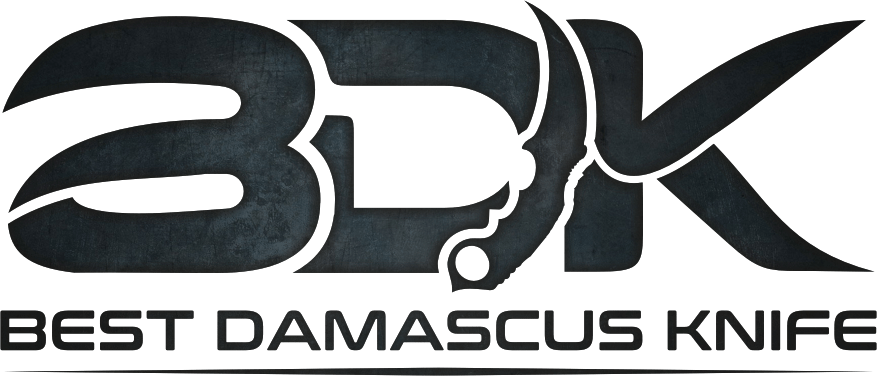
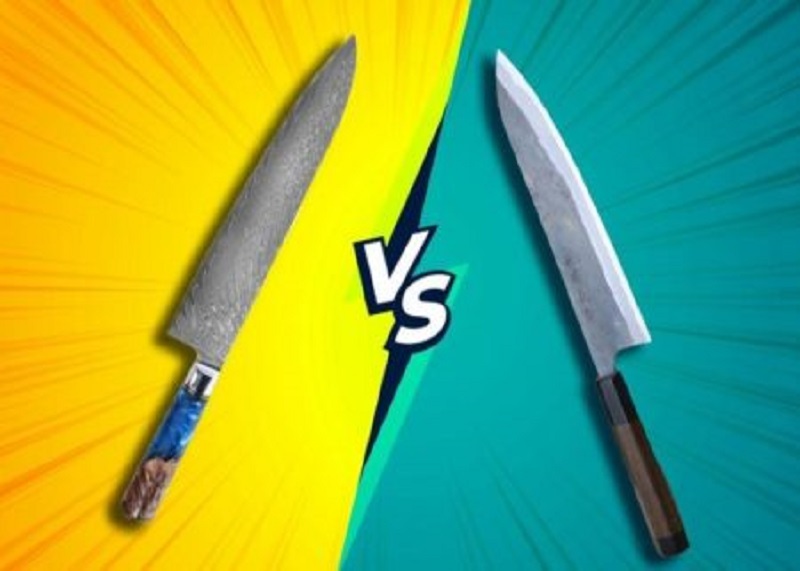
![[6-Inch]Utility Paring Knife FANTECK Chef Knife Damascus Stainless Steel VG10 Pro Razor Sharp Blade High Carbon 67-Layer Kitchen Cutlery Cutting Fruit Utility Knife Gift Box-Ergonomic Pakkawood Handle](https://m.media-amazon.com/images/I/511Q-sifdbL._SL160_.jpg)









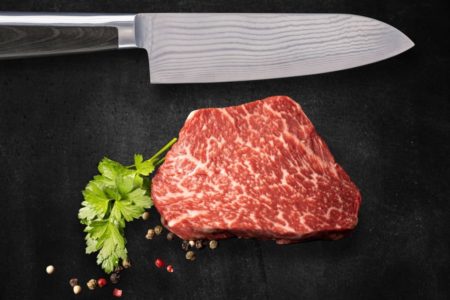




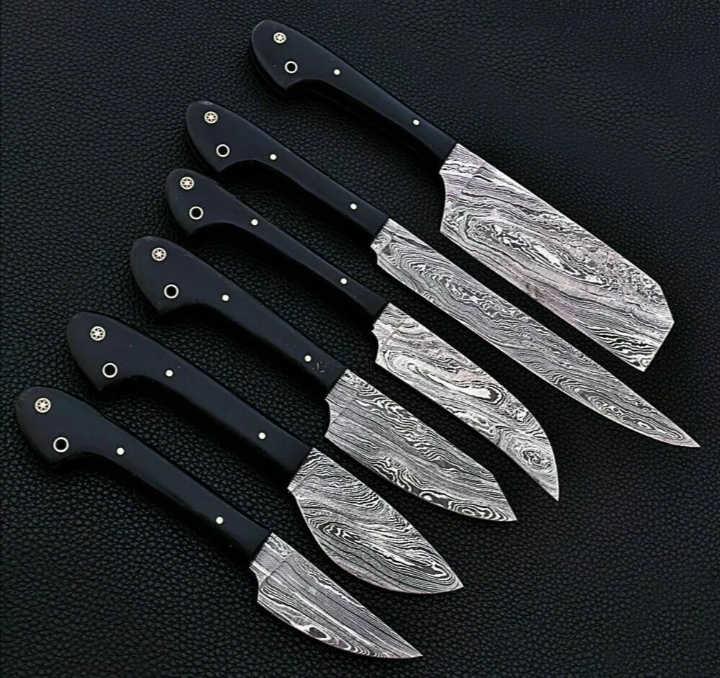
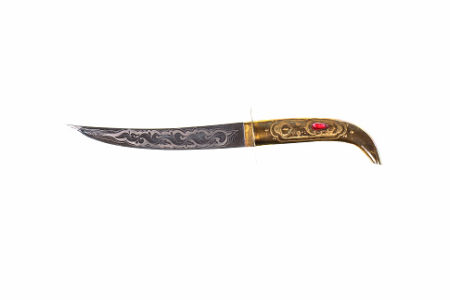
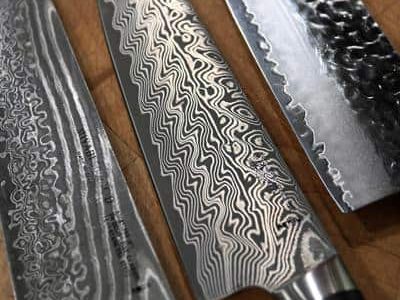
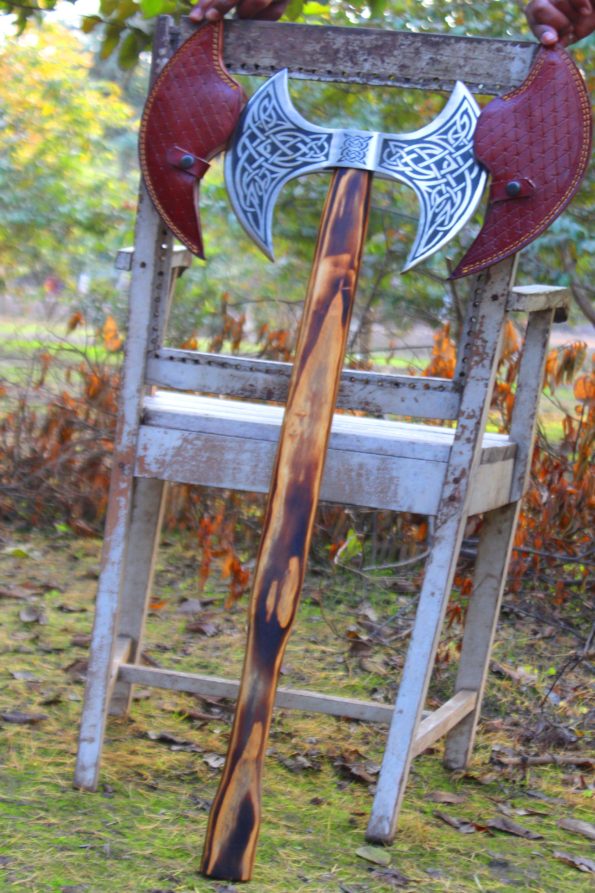


![[6-Inch]Utility Paring Knife FANTECK Chef Knife Damascus Stainless Steel VG10 Pro Razor Sharp Blade High Carbon 67-Layer Kitchen Cutlery Cutting Fruit Utility Knife Gift Box-Ergonomic Pakkawood Handle](https://m.media-amazon.com/images/I/511Q-sifdbL._SL500_.jpg)









